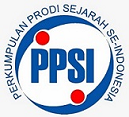Tumpuan Harapan Petani di Utara Bumi Lamadukelleng 1992-2015
(1)
(2) Pendidikan Sejarah
(3)
(*) Corresponding Author
DOI: https://doi.org/10.26858/pattingalloang.v5i1.6678
Abstract
This paper discusses the background of Awo Weir construction and how it impact the exictence of Awo Weir for people who have used their water for agriculture. The results of this study indicate that the background of Awo weir construction can not be separated from the Repelita program in the New Order era. Awo weir was built in 1992-1994 and inaugurated by the President of the Republic of Indonesia, Soeharto. Subsequently in its development after the functioning of Awo I (1994), Awo II (1998) and Awo III (2000) have irrigated 5,250 ha of land consisting of potential land and productive land (rice field) until 2015 Awo Irrigation service area of more than 4000 ha of land rice fields located in two districts namely Keera and Pitumpanua. The existence of Awo weir has a impact on the people who have used the irrigation water. The most perceived impact of society that is increasing the economic aspect because agriculture is implemented twice a year, which of certainly increases the productivity of agricultural products. This research method is using qualitative. Consisting fo heuristic, kritism, intrepretation and historiography. The data obtained by doing an interview with Head Office of the UPTD Awo Weir, civil servanst irrigation, rectires, farmers and archive (documents from the UPTD) and literature related (books, paper).
Full Text:
PDFReferences
Akisman, 2017. Dampak keberadaan Bendung Awo [Interview] (6 Oktober 2017).
Asse, A., 2018. Latarbelakang terjadi perubahan pola pertanian [Interview] (8 Maret 2018).
Badan Pusat Statistik , 1996, 1998, 2002, 2007, 2011, 2014, 2016. www.bps.wajo.go.id. [Online]
Available at: http//www.bps.wajo.go.id
[Accessed 7 3 2018].
Daliman, 2015. Metode Penelitian Sejarah. Yogyakarta: Ombak.
Irwan, A., 2018. Gambaran daerah Irigasi Awo di dua kecamatan [Interview] (8 Maret 2018).
Laodding, 2018. Latar belakang pembangunan Bendung Awo [Interview] (10 Maret 2018).
Loddang, 2018. Reson masyarakat pada saat pembangunan Bendung Awo berlangsung [Interview] (8 April 2018).
Nawas, A., 2018. Wawancara dengan Bapak Abu Nawas di Kantor UPTD Bendung Awo [Interview] (16 Maret 2018).
Pusposutrdjo, S., 2001. Pengembangan Irigasi, Usaha Tani Berkelanjutan dan Gerakan Hemat Air. Jakarta: Direktorat Jenderal Pendidikan Tiinggi Departemen Pendidikan Nasional.
Robert, J. K., 2002. Pengelolaan Sumber Daya Air Dalam Otonomi Daerah. Yogyakarta: Andi Offset.
Saharuddin, 2018. Dampak keberadaan Bendung Awo bagi masyarakat [Interview] (8 Maret 2018).
Sjamsuddin, H., 2007 . Metodologi Sejarah. Yogyakarta: Ombak.
Soetrisno, L., 1998. Pertanian pada Abad ke 21. Jakarta: Direktorat Jenderal Pendidikan Tinggi Departemen Pendidikan dan Kebudayaan.
Supratman, 2018. Wawancara dengan Bapak Supratman via telepon [Interview] (14 April 2018).
UPTD Bendung Awo , 1992. Kontrak Kerjasama PT Waskita Jaya Purnama dengan Dinas PU Provinsi Sulawesi Selatan, Makassar: s.n.
UPTD Bendung Awo, 1993. Tender Evaluation, Kaluku: UPTD Bendung Awo.UPTD Bendung Awo, 1997. Desain Peta Tata Letak Daerah Irigasi Awo, Kaluku kabupaten Wajo: s.n.
UPTD Bendung Awo, 2010. Profil Bendung Awo, Kaluku, Kabupaten Wajo: s.n.
Article Metrics
Abstract view : 175 times | PDF view : 49 timesRefbacks
- There are currently no refbacks.
Published by:
PROGRAM STUDI PENDIDIKAN SEJARAH
FAKULTAS ILMU SOSIAL
UNIVERSITAS NEGERI MAKASSAR
Kampus UNM Gunung Sari Gedung Fakultas Ilmu Sosial Lantai 3, Jalan Raya Pendidikan, Makassar. 90222.
Phone 082395232077
E-mail: jurnal.pattingalloang@unm.ac.id
jurnalpattingalloang@gmail.com
Indexed by
Licensed by

Pattingalloang is licensed under a Creative Commons Attribution-NonCommercial 4.0 International License.
Pattingalloang Stats
style="text-align: center;












